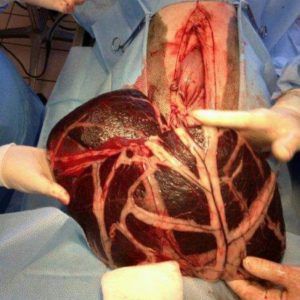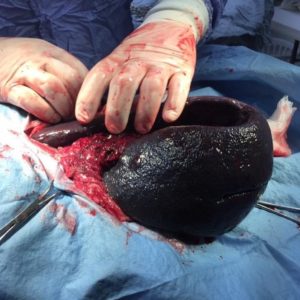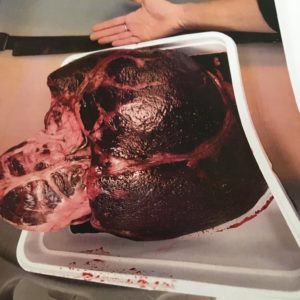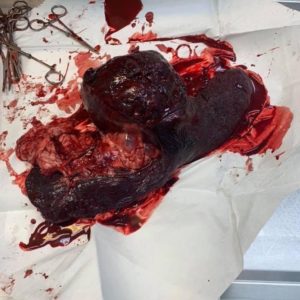Splenic Torsion
Overview:
The spleen exists as a filter to destroy excess red blood cells and act as a reservoir for blood. It supports the immune system with its large volume of lymphoid tissue. Splenic torsion is a twisting, or folding and unfolding of the spleen. It may occur by itself (rare, except in Swissys) or in association with gastric dilatation-volvulus (GDV) syndrome, commonly known as bloat. In this secondary type, the conventional wisdom is that the stomach bloats and twists, taking the spleen with it. Splenic torsion cuts off the blood flow in the area where it occurs, resulting in a painfully enlarged spleen. While no known cause has been firmly defined, it is felt that the causes might include trauma, previous surgery, rolling, retching and exercise as contributing factors. It is more prevalent in large breed, deep-chested dogs.
There are four types of splenic torsion in dogs.
- Acute: Sudden onset in which the canine collapses in severe pain; this is an emergency situation requiring immediate veterinary medical attention. This is a life-threatening emergency.
- Chronic: This is a more gradual and subtle onset, presenting with more non-specific symptoms than acute onset.
- Primary: This presents as solely splenic torsion without GDV. Rare in most breeds, but more common in Swissys.
- Secondary: This type presents in conjunction with GDV.
Warning Signs/Symptoms:
Symptoms of splenic torsion in dogs will vary depending on whether it is acute or chronic. They include (with acute symptoms listed first):
- Acute collapse with abdominal pain (seek emergent care quickly)
- Abdominal pain/distension/mass
- Vomiting, incessant nausea
- Blood Test, PCV of less than 30
- Lack of appetite
- Swelling of the abdomen
- Weight loss
- Excessive drinking and urination
- Urine color changes (may look like port wine)
- Pale gums
- Lethargy
- Lick fits
- Depression
What to do:
If you suspect acute splenic torsion, you must get your dog to an emergency veterinarian immediately. This is a life threatening emergency! With chronic symptoms, you need to seek advice from your veterinarian as soon as possible.
What to Expect at Vet:
You will need to advocate for your GSMD! Most vets are not familiar with splenic torsion and you will need to present the article below by David Jackson DVM, as well as keep the diagnosis of splenic torsion in the forefront, if suspected. The veterinarian needs to know that this is not an unusual problem for Swissys.
Your veterinarian will conduct a thorough medical history of your dog’s health and will want to know about its symptoms, their severity and onset. He will do a physical examination and most likely order a CBC, urinalysis and possibly other lab tests as well. Abdominal radiographs (x-rays) will be done to assess the size, position and condition of the spleen. The vet may also want an abdominal ultrasound or CT.
Treatment/Prevention:
Splenic torsion is usually treated with surgery. If your dog has gone into acute shock, your vet will need to stabilize him first with the use of IV fluids, antibiotics, and a plasma or blood transfusion. The spleen will be removed (splenectomy). At this time, a gastropexy of the stomach will need to be performed as well. The stomach will be surgically affixed so that it won’t flip in the future (bloat). Your dog will most likely remain in the hospital so he can be monitored. Fluid therapy will continue.
When your dog can return home, he will need a safe, quiet place to recover. Inspect his incision daily to make sure it doesn’t become infected. His activity will be restricted while he heals and he may need a E-collar so he doesn’t bother his surgical incision. The prognosis is generally good for dogs with simple cases and is better the sooner the spleen is removed.

Resources:
Swissy Spleen Syndrome by David E. Jackson, VMD; Sharyl L. Mayhew, BA, LVT
Splenic Torsion. The American College of Veterinary Surgeons.
Twisted Spleen in Dogs by Cecilia de Cardenas. PetMD
Splenic Torsion in Dogs. Wag!
What is Twisted Spleen In Dogs? By Adriana Sandoval
PHOTO EXAMPLES OF DISEASED/ ENLARGED / RUPTURED GSMDs SPLEENS




